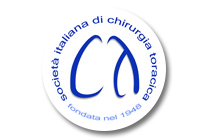Eur J Cardiothorac Surg. 2017 Aug 1;52(2):346-355.
Abstract
OBJECTIVES:
Surgery for thymic epithelial tumours (TETs) with pleural involvement is infrequently performed. Thus, the value of surgical therapy for primary or recurrent TETs with pleural involvement is not sufficiently defined yet.
METHODS:
Twelve institutions contributed retrospective data on 152 patients undergoing surgery (1977-2014) on behalf of the ESTS Thymic Working group. Outcome measures included overall (OS), cause-specific (CSS) and disease-free (DFS) survival as well as freedom from recurrence (FFR).
RESULTS:
In 70.4% of cases, pleural involvement was present at the time of primary intervention, whereas 29.6% had surgery for recurrent disease involving the pleura. Pleural involvement resulted from thymomas (88.8%) and thymic carcinomas (11.2%). Forty extrapleural pneumonectomies (EPPs), 23 total pleurectomies (TPs), and 88 local pleurectomies (LPs) were performed (completeness of resection in 76.8%). OS for the entire patient population at 1, 3, 5 and 10 years was 96.4%, 91.0%, 87.2% and 62.7%, respectively. There was no statistically significant difference regarding FFR and OS for patients with local or advanced disease undergoing EPP, TP or LP. Thymic carcinomas in comparison with thymomas had a negative impact on OS [hazard ratio 6.506, P = 0.002], CSS and FFR. Incomplete resections predicted worse OS [hazard ratio 6.696, P = 0.003].
CONCLUSIONS:
Complete resection remains the mainstay of treatment for TETs with pleural involvement. Study populations treated with EPP, TP and LP had similar survival that may be factual as observed, but in the presence of selection bias, we can further conclude from the results that EPP, TP and LP are equally effective procedures. Procedural choice depends upon the extent of tumour distribution. EPPs, TPs and LPs performed within a multimodality setting seem to be efficient procedures for local control of disease, as they yield excellent results regarding OS, DFS, CSS and FFR.

